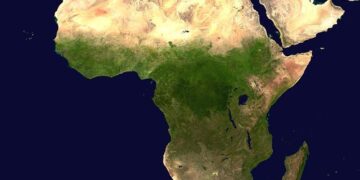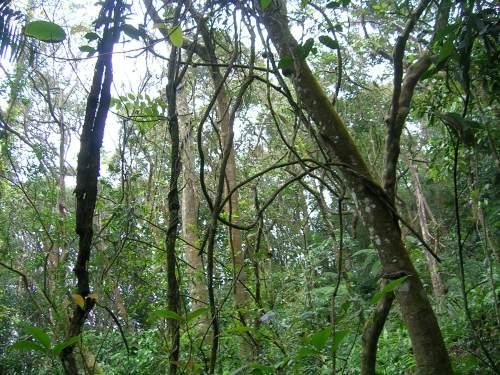Detecting the hidden web of lianas-woody vines that entwine tropical trees-has long challenged forest scientists aiming to monitor ecosystem health from afar. Now, a groundbreaking study published in ESA Journals sheds new light on when and how these prolific climbers can be observed from space. By unraveling the complex optical signatures of liana-infested forests, researchers move closer to developing reliable satellite-based tools for tracking these often-overlooked components of tropical ecosystems. This advancement promises to enhance our understanding of forest dynamics and carbon cycling on a global scale.
Detecting Lianas from Space How Advanced Satellite Imaging Reveals Forest Dynamics
Advances in satellite imaging technology have paved the way for unprecedented insights into forest ecosystems, particularly in identifying and monitoring liana infestations. Using high-resolution hyperspectral sensors, scientists can now distinguish the unique optical signatures of lianas-woody climbing plants-from surrounding tree canopies. These spectral distinctions arise primarily due to lianas’ leaf structure and chlorophyll content, which differ markedly from those of trees. This means that through targeted wavelength analysis, especially in the near-infrared and shortwave infrared bands, researchers are beginning to achieve reliable detection of liana density over extensive, previously inaccessible forested areas.
Key factors influencing this detection capability include:
- Canopy Structure: Complex layering impacts light reflection.
- Seasonal Variability: Phenological changes affect spectral responses.
- Sensor Sensitivity: Spatial and spectral resolution crucial for differentiation.
To quantify these variables, the latest research employs mechanistic models combining forest optical properties with environmental data. Below is a simplified overview showcasing how different satellite platforms compare in their effectiveness to detect lianas remotely:
| Satellite Platform | Spectral Range | Spatial Resolution | Liana Detection Capability | ||||||||||||||||||||||||||||||
|---|---|---|---|---|---|---|---|---|---|---|---|---|---|---|---|---|---|---|---|---|---|---|---|---|---|---|---|---|---|---|---|---|---|
| Sentinel-2 | Visible & NIR (0.4-1.0 µm) | 10-20 m | Moderate | ||||||||||||||||||||||||||||||
| PRISMA | Hyperspectral (0.4-2.5 µm) | 30 m | Understanding the Optical Signatures of Liana Infestation Insights into Canopy Reflectance and Light Absorption
Liana infestation drastically alters the optical properties of tropical forest canopies by modifying how sunlight interacts with leaves and branches. These woody vines increase the canopy’s overall reflectance in the near-infrared (NIR) spectrum while simultaneously reducing the absorption of photosynthetically active radiation (PAR). This dual effect arises because lianas tend to have thinner, more reflective leaves with less chlorophyll than their host trees, causing more light to be scattered back upward. As a result, satellite sensors detecting NIR reflectance can potentially identify liana-infested areas by the characteristic spectral signature these plants imprint on the forest canopy. To quantify these optical changes, researchers use a combination of field measurements and radiative transfer models, focusing on several key canopy parameters. These include leaf angle distribution, leaf optical properties, and the vertical layering of lianas within the host canopy. The table below summarizes the main variables influencing canopy reflectance differences between healthy and liana-infested forests:
Understanding these interactions helps refine remote sensing algorithms to detect lianas from orbit more effectively. By integrating mechanistic insights into how lianas affect canopy reflectance and light absorption, scientists move closer to mapping infestation patterns at landscape scales – a critical step to assessing their ecological impacts and guiding forest management strategies. Recommendations for Enhancing Remote Sensing Techniques Toward Accurate Monitoring of Tropical Forest HealthEnhancing remote sensing techniques to accurately monitor tropical forest health demands a multi-faceted approach that leverages recent advances in sensor technology and data processing algorithms. Hyperspectral imaging, with its fine spectral resolution, is critical for distinguishing subtle differences in canopy reflectance caused by lianas versus host trees. Furthermore, integrating LiDAR data can offer three-dimensional structural insights that, when combined with spectral data, create a robust signature to detect and map liana infestations. These technological synergies should be complemented by the use of machine learning models tailored for heterogeneous tropical environments, improving classification accuracy across diverse forest types. Implementation of standardized ground-truth protocols remains essential to refine and validate remote sensing outputs, especially in complex liana-infested systems. Researchers are encouraged to adopt a framework that includes:
Wrapping UpAs efforts to monitor Earth’s forests from space become increasingly sophisticated, the ability to detect lianas-woody vines that can dramatically alter forest dynamics-emerges as a critical frontier. This study in ESA Journals marks a significant step toward untangling the complex interplay between lianas and forest canopy optics, paving the way for more accurate remote sensing techniques. With improved detection capabilities on the horizon, scientists are poised to gain unprecedented insights into how these entwining plants influence carbon cycling and forest health on a global scale. The future of forest monitoring, it seems, will be watching the vines as closely as the trees. |































